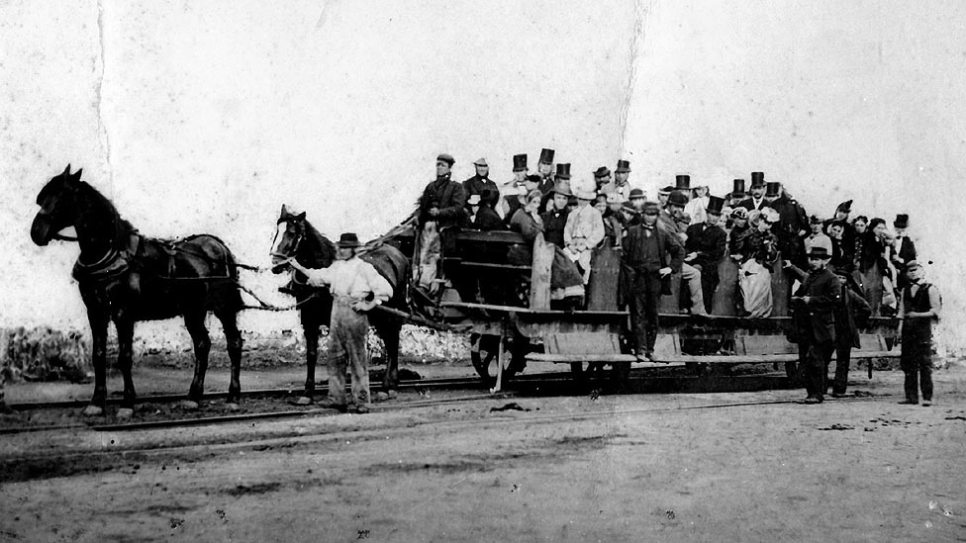In 1807 in Wales, the first tram was created to run on the Swansea and Mumbles railway, and was, like most forms of transport at the time, pulled by a number of horses. Usually two horses would pull the odd looking tram along the tracks controlled in a similar way to a horse and cart. Actually, trams looked rather like a float. Eventually, they decided to add a roof to tram design.
It took about fifty years after the invention of the tram for them to appear in British cities and be put into proper use. Some of the pitfalls of this however were the number of horses that had to be cared for in order to run trams throughout the day as each horse could only handle so much pulling. The rails made moving larger hauls easier. Also some councils were not happy with the introduction of trams to their streets and voiced their opposition, successfully removing some routes.
Another problem surrounding horse pulled trams was the amount of excrement being left by horses on city streets. The streets began to smell just as lovely as taking a big breath of manure. As the conditions worsened, new technologies to replace horses were highly sought after.
The steam tram was invented but had just as many issues as horse power. The soot produced by the tram covered its occupants so much so that people did not want to travel by tram. Another reason people were deterred was because of the extremely loud noise erupting from the tram. People feared for their lives while aboard due to this monstrous noise!
In 1881 in Germany the first electric tram was put to work in Berlin. Interestingly just twenty one years earlier a major tram accident occurred in Amsterdam and many German soldiers died. Their tram was travelling over a bridge that ran over a large canal. The tram driver was obviously unaware that the bridge had been altered to allow a ship to pass through, and the tram ran over the edge and into the canal, where a majority of the 188 soldiers, who mostly could not swim, drowned.
Another tragedy occurred in Britain in 1907, but this time with an electric tram. The open topped tramcar was travelling up Pye hill when the electricity failed and the tram slowed, stopped and began to roll backwards. As it gained speed travelling out of control down the hill despite its conductor’s attempts to break, it derailed and smashed into a nearby building killing 5 people and injuring 35 others.
Today, trams are designed so that they don’t lose control if the power supply fails. However they do still crash into cars and occasionally, one another. As the signs in Melbourne suggest, a rhino on a skateboard is still difficult to control.
For more pictures of trams through history click here.
